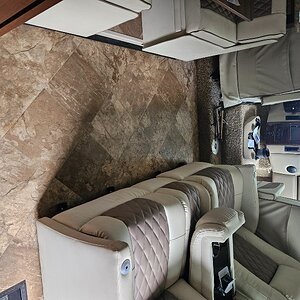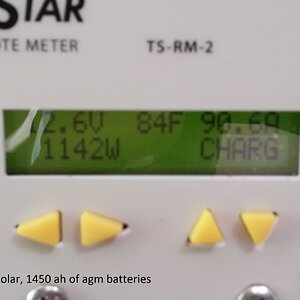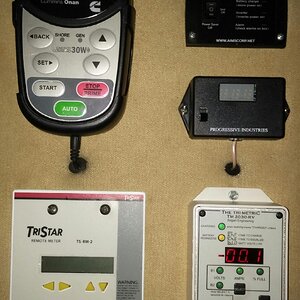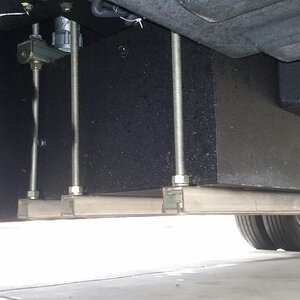Today was the day to do one last task on my list on my 2017 Newmar Ventana prior to the next trip. I've been wanting to upgrade my 3.4 gpm water pump to a 5.3 gpm pump to see if it can better handle water running in multiple locations such as taking a shower while the washer is running and not impact either. I also wanted to add an accumulator tank as at times the master bathroom faucet will pulsate due to the low demand on the water pump. Having researched accumulator tanks and watched various YouTube videos on it I'm surprised it's not installed standard in all RV's, at least luxury RV's. It seems to handle low pressure demands much better and also extend the life of the water pump.
I changed my REMCO 3.4 gpm aquajet with a
REMCO aquajet ARV 5.3 gpm model. Certainly a beefier and slightly larger pump yet remains within the water pump controller power limits and has the same pressure output max so no risk of blowing pipes. As to the accumulator, also went with
REMCO's accumulator, looks like a nice quality product. Picked up some fittings and braided water line and off I went.
Spent about 4 hours today removing the wet bay panel and swapping pumps. I guess I see why the accumulator is not standard in all as I really didn't have a good place to mount it. So it's sitting towards the back near the low point drain valve. While the job isn't yet complete, I have about an hour of work, everything is reconnected so at least I could test the pump and it works great. Also something of note is that when you use an accumulator tank the water pump will always continue running about 5-10 seconds after demand for water is off so it recharges the accumulator tank.
While I'm glad the job is done I want to ask the community for a favor. Any time I ever mention doing something that requires taking the wet bay panel off or tell someone it's not hard. Please begin an immediate intervention, or worse, just stop me. I never want to deal with this wet bay panel again and of course all my little mod's to it such as drainmaster automatic gates, SeeLevel, sani-con, dual house filter, etc. Bring me the Advil!!!!













